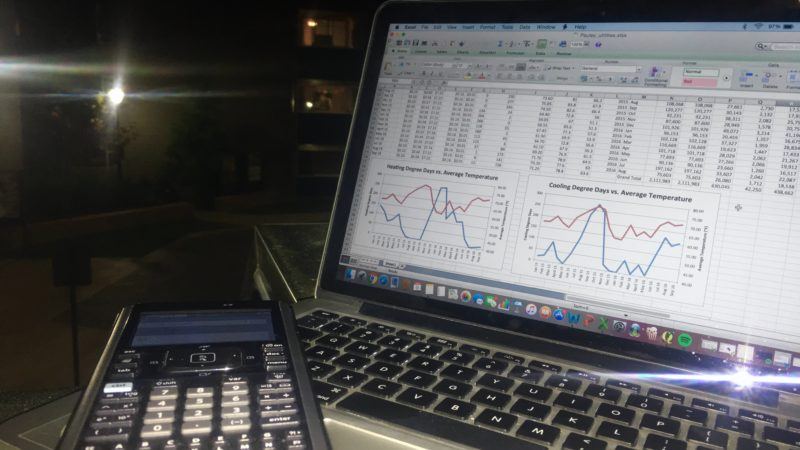
By Shannon Cavanaugh
There’s a reason you get docked a point on physics exams if you forget units. As it turns out, units are very important in physics problems as well as in real life. This week, after acquiring utility records for Pauley Pavilion, we were tasked with beginning our data analysis by graphing utility use and trends over a twenty-month period. The data, with values for monthly use of water, firm gas, chilled water, steam, electricity and heating/cooling degree days, provided us with everything we needed to begin graphing and analyzing energy use—or so we thought.
The spreadsheet of values collected from meters in and around the building lacked units. With our contact in facilities providing as much information about the meters and their values as possible, we were still left with some questions about the measurements. As we learned with the help of our stakeholder, utilities are often consumed at rates too high for common SI units, especially for a building as large and energy-intensive as Pauley. Some of the units seem totally random, such as measuring chilled water in ton-hours, referring to the cooling required to freeze a metric ton of ice in 24 hours.
As we converted the values and graphed against time and cost we began to get a picture of Pauley’s utility consumption and gaps in data that require more investigation. However, in one instance, we utilized the 3rd-grade math technique of reasonableness to decide that the units we used were incorrect when a calculation projected a bill of $1 million for a month of water use. With the units finally cleared up for this dataset we definitely don’t take units for granted anymore, and we’ve learned that a small notation may save a lot of frustration later on.
